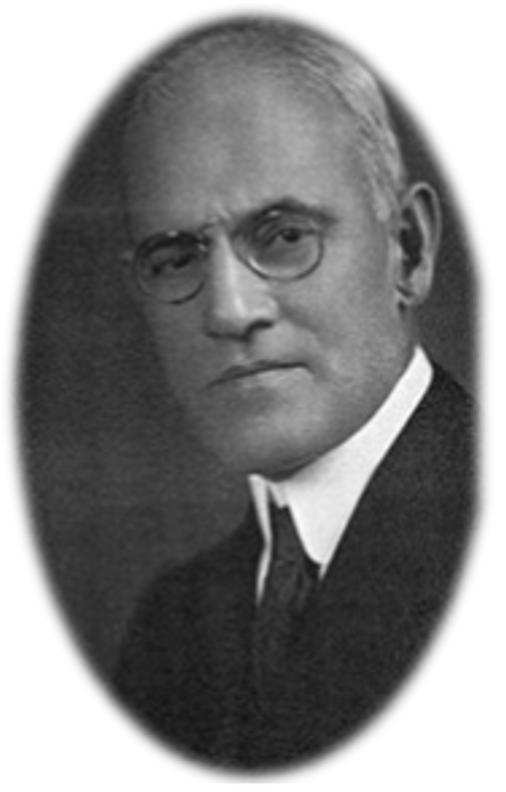Radburn's Bing: What Trump could have been
A study in idealism vs. 'selfishness'
In 1988 New York Times architectural critic Paul Goldberger worried that the brash young real estate developer Donald J. Trump had squandered his potential.
At the time, Trump was still making his mark. Trump Tower on Fifth Avenue was only five years old, and he’d just succeeded (where the city had failed) in refurbishing Wollman Rink in Central Park.
Trump had a reputation for getting things done, if not always in the best taste or with the lightest touch. But, Goldberger lamented, Trump now was focusing on garish casinos, and had come to personify an age when “greed and power are celebrated, and selfishness triumphs.’’
The tragedy, Golberger wrote, was this: “If he wished, Mr. Trump could become our age's version of the visionary 1920's developer Alexander Bing.’’
Most readers probably thought: Who?
Goldberger had reached back six decades for his comparison. Like Trump, Alexander M. Bing was a 40-something developer of luxury Manhattan apartment houses who sought new worlds to conquer.
For Trump, those worlds included casino gambling, reality television and, finally, presidential politics.
For Bing, the challenge was creating an “American garden city’’ — an idealistic dream that in 1929 would produce Radburn.
A new kind of town
That quest really began one day in 1922, with two men taking a stroll on the streets of Manhattan.
One was Bing. The other was an old family friend, the architect Clarence Stein.
By 1922 Bing had left a development partnership with his brother Leo that before World War I had built many of the first high rise apartment houses on Park Avenue. During the war Alexander had worked in Washington as a dollar-a-year government advisor on labor relations and worker housing. Now he was looking for a similarly public-spirited mission.
And on that fateful walk, Stein suggested one – creating a model garden city like those he’d recently visited in England: a walkable and affordable community of homes, stores, schools, offices and factories, safe for pedestrians, connected to mass transit and interlaced with parkland.
Bing took the bait. In 1924 he formed the semi-philanthropic City Housing Corporation to build Sunnyside Gardens in Queens, a development designed by Stein and his partner Henry Wright. The community’s success cleared the way for Radburn, where ground was broken in 1928.
Radburn – “The Town for the Motor Age’’ – was an immediate sensation, thanks in part to Bing’s gift for real estate promotion. The community was repeatedly featured in The New York Times, and approving editorials appeared in more than 200 U.S. and foreign periodicals. Soon, so many families were moving into Radburn that the Times called it America’s fastest growing community.
Riding for a fall
But in October 1929 – six months after the first families arrived – the stock market crashed, marking the beginning of the Great Depression. By 1931, homeowners were defaulting on mortgages, which – in a plan to promote homeownership that prefigured federal efforts in later years – the CHC had guaranteed.
“Yesterday morning was difficult,’’ Stein wrote to his wife on March 6, 1931. “Alone with Al Bing for hours. His spirit has fallen low. He has been hit hard by the financial crash, but that does not seem to worry him so much. … It’s City Housing that worries him. Can it weather the storm? He is no longer able to keep it afloat with his hundreds of thousands…. Al said, ‘I know when I am licked.’’’
In 1934, the CHC declared bankruptcy. Many foreclosed homeowners -- especially in Sunnyside – blamed Bing. He “was vehemently attacked,’’ Stein later recalled, even though he “gave homeowners as much time as (he) could to pay.’’
Despite his losses, Bing had a third act. He became an art patron, collector and painter. He had his first one-man show when he was 75.
On Nov. 29, 1959, Bing died at 80. In a letter the next day, Stein wrote: “It’s good he has had these years…. He’s made good use of them.’’
Some, like the Times’ Goldberger, never forgot Bing. “Though the seeds that Alexander Bing planted had a limited growth at Radburn,’’ Stein wrote in a memoir, “they are germinating, developing, and flowering in various forms throughout the world.’’
Stein was referring to communities from Japan to India to Sweden to England. But he might also have been referring to an idea – that sometimes, some people build not merely to try to enrich themselves, but to try to create a better place for others.




So Bing never finished his dream development and Trump is President. Not getting the comparison
Great ending to a fascinating comparison.